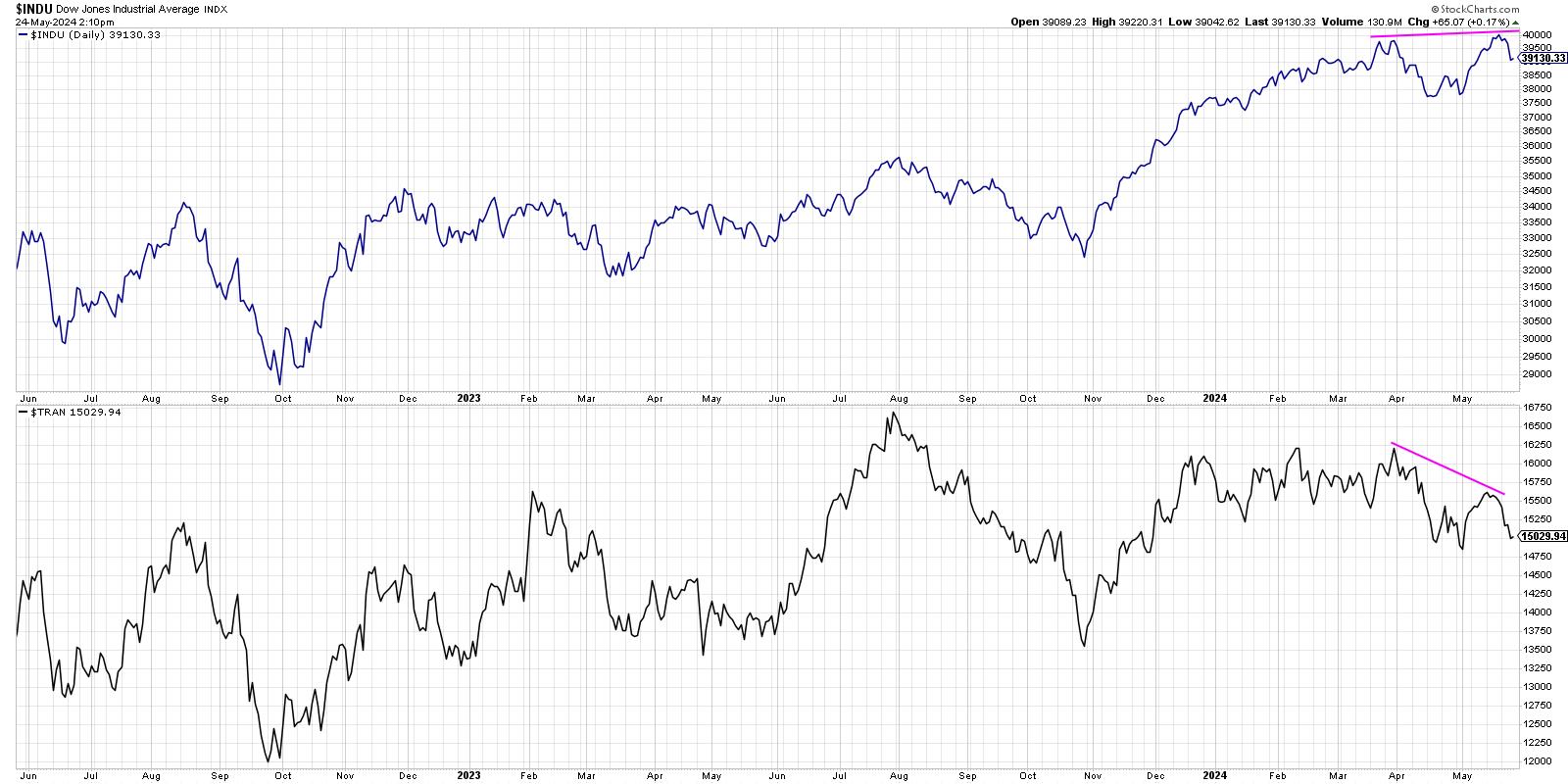Dow theory flashes bearish signal | a cautious investor

Dow theory is based on the fundamental work of Charles Dow, considered the “father of technical analysis.” From trend analysis to index construction, many of the tools we use to better analyze market structure and investment sentiment are derived from Dow’s original essays from the early 20th century.
Dow compared two indices to gauge the strength of the economy. That is, Dow Industrials, which represents commodity producers, and Dow Railroads, which tracks commodity distributors. If both of these indices hit new highs, economic conditions are strong and the market is in a bullish phase.
In the age of modern financial analysis, when the Dow Industrials and Dow Transports (originally evolved from the railroad index) fail to confirm new highs, a “bearish confirmation” occurs, indicating trend exhaustion. One of my guests this week final bar, Jeff Huge of JWH Investment Partners digs deeper into the methodology, highlighting signals from the Dow Theory. Today we’ll take a look at what this indicator means for stocks in the second quarter and also take a look at two newer versions of the Dow theory.

Here we show the traditional version of Dow Theory with Dow Industrials in the top panel and Dow Transports in the bottom panel. Notice how the Dow recently hit an all-time high, surpassing 40,000 for the first time in history. Additionally, Dow Transports has not confirmed this recent high and has actually been trending downward over the past two months. Since only one of the indices set a new record and that breakout was not confirmed by the other indices, it would suggest that the Dow has internal weakness in the market and is likely to hit a major market high.
Proponents of traditional Dow theory will note the long-term success of these signals, which often provide excellent early warning signals of upcoming danger. Detractors describe the 2024 Dow Industrials as containing a lot of “non-industrial” names like banks and service companies. For example, technology stocks like Microsoft and Salesforce are part of the Dow Industrials! And companies like Amazon.com are not included in Dow Transports, despite having exceptionally strong built-in distribution networks.
So what else can we do to apply Dow’s theory in 2024? What if we used the S&P 500 to represent “old economy” names and the Nasdaq Composite to track “new economy” companies?

Using this “New Dow Theory,” we see that the S&P 500 and Nasdaq Composite have already reached new all-time highs in May 2024. So there is no bearish disconfirmation as seen in traditional Dow theory. What’s wrong with this approach? Mega-cap growth stocks dominate both these market capitalization weighted indices! So we are essentially counting the biggest names twice.
This led me to what I call the “New Dow Theory,” which uses equal weight indices for the S&P 500 and Nasdaq 100. This would effectively neutralize large-cap overweighting, especially in the S&P 500 index.

This is where things get a little more concerning for market bulls. The S&P 500 already hit an all-time high in the second quarter, but the equal-weighted S&P index is still below its March high. And while the equally-weighted Nasdaq 100 index has held up quite well in recent weeks, it has also failed to hit new all-time highs.
Currently, this Newer Dow Theory comparison uses a simple analysis of Charles Dow’s market trends to present market weaknesses. As he determined 120 years ago, an uptrend is a pattern of higher highs and higher lows. So, if there are no higher highs, the upward trend should be questioned.
So while the traditional Dow theory is already sending bearish signals, I am watching this new Dow theory as May transitions into June. If this final chart shows a bearish disconfirmation or the equal-weighted index fails to hit another new high, the market bears could be proven right as we head into the summer!
RR#6,
dave
P.s Are you ready to upgrade your investment process? Check out our free behavioral investing course!
David Keller, CMT
Chief Market Strategist
StockCharts.com
disclaimer: This blog is for educational purposes only and should not be construed as financial advice. You should not use any of our ideas and strategies without first evaluating your personal and financial situation or consulting with a financial professional.
The author had no positions in any securities mentioned at the time of publication. All opinions expressed herein are solely those of the author and do not in any way represent the views or opinions of any other person or entity.

David Keller, CMT, is Chief Market Strategist at StockCharts.com, where he helps investors minimize behavioral bias through technical analysis. He is a frequent host of StockCharts TV and links mindfulness techniques to investor decision-making on his blog, The Mindful Investor. David is also President and Chief Strategist at Sierra Alpha Research LLC, a boutique investment research firm focused on risk management through market awareness. He combines strengths in technical analysis, behavioral finance, and data visualization to identify investment opportunities and strengthen relationships between advisors and clients. Learn more



